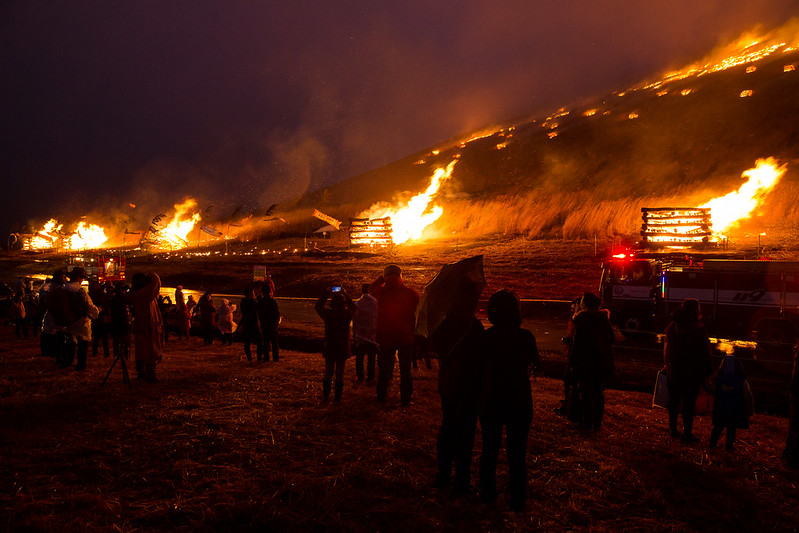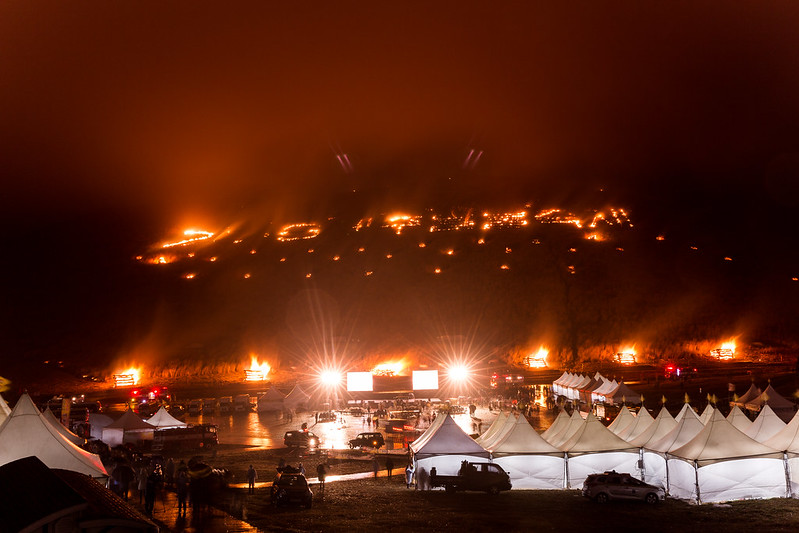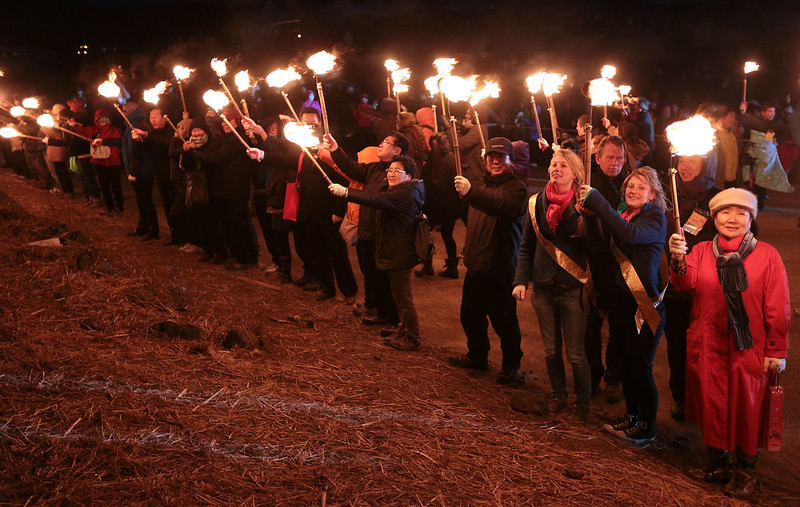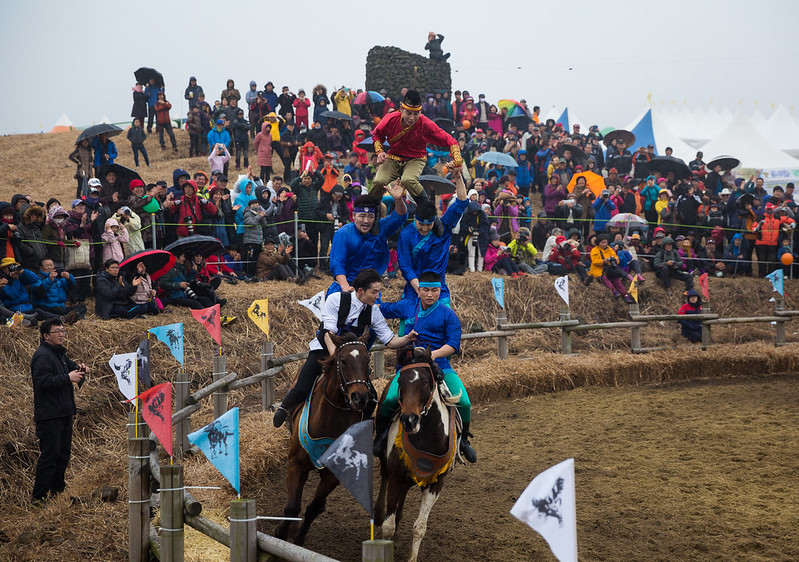Jeju Fire Festival
Jeju Fire Festival: A Spring Spectacle Igniting the Land and Spirit
2023/03/09 - 2023/03/11
Every spring, the vast grasslands of Jeju Island are set aglow during the Jeju Fire Festival (Jeju Deulbul Festival). At Saebyeol Oreum (Saebyeol Volcanic Cone), locals and visitors gather to witness the dramatic burning of the hillsides, celebrating Jeju’s unique agricultural heritage and the arrival of new life. For those seeking an extraordinary experience, this “festival of fire and earth” is an unforgettable spring memory that engages all five senses.
As dusk falls, anticipation and excitement fill the air. Waves of fire race down the hills, the crackling of burning grass echoes, the scent of smoke mingles with the sea breeze, and the warmth of the flames touches your skin. It’s a primal yet communal experience-ancient ritual and modern festival intertwined. On this night, everyone becomes part of a luminous circle, united by the flames.
Main Attractions
The Burning of Saebyeol Oreum
The climax of the festival is the simultaneous burning of the grasslands on Saebyeol Oreum. As night falls, torchbearers ignite the slopes, sending rivers of fire cascading down the volcanic cone and lighting up the night sky. Tens of thousands watch in awe as the flames sweep down the hill. This ritual, called "bangae," originated as a traditional Jeju farming practice to eliminate pests and enrich the volcanic soil.
Torch Parades, Fire Shows, and Folk Performances
Before the main burning, torch parades wind through the grasslands, with participants carrying flames and lanterns. Traditional drumming, shamanic rituals, and folk dances energize the crowd, while fireworks, fire juggling, and light shows add to the spectacle. The festival is a feast for the eyes and ears, uniting earth and sky in celebration.
Cultural and Historical Background
The Jeju Fire Festival is rooted in the island’s agricultural traditions. Every spring, Jeju’s people practiced “bangae”-burning the grasslands to control pests and fertilize the volcanic ash soil, praying for a bountiful harvest. This act symbolized a prayer to nature and the unity of the community. In modern times, the ritual has been revived as a festival, allowing visitors to experience Jeju’s unique culture and landscape each spring.
Today, the festival stands as a symbol of renewal, community, and harmony with nature. Locals express gratitude to their ancestors and the land, while visitors can feel the fiery spirit of Jeju firsthand.
Participant Voices
Watching the hills engulfed in flames felt like a dream. The heat, the sound, and the sense of unity as everyone watched together made me feel the power of an ancient ritual.
Fun Facts
- "Bangae" is the Jeju dialect word for the traditional burning of grasslands.
- The volcanic ash soil becomes more fertile from the fire’s ashes, benefiting crops and livestock.
- There are over 360 oreum (volcanic cones) scattered across Jeju Island, including Saebyeol Oreum.
Festival Dates
The Jeju Fire Festival is held every March at Saebyeol Oreum on Jeju Island. Arrive before sunset to join the torch parade and witness the unforgettable sight of the hills set ablaze in a celebration of fire and renewal.
The event schedule is subject to change. Please check the official website for the most up-to-date information.
Information
| Name | Jeju Fire Festival |
| Country | Korea |
| Area | Jeju |
| Date | 2023/03/09 - 2023/03/11 |
| Link |
Upcoming Festivals
Whirling Dervishes Festival Turkey
A Mesmerizing Dance of Divine Love
2025/12/06Mevlana Celaleddin Rumi Commemoration Ceremony ( Şeb-i Arus ) Turkey
A Whirling Journey to Divine Love
2025/12/10Dia de la Virgen de Guadalupe Mexico
A Festival Weaving Faith, Fervor, and Mexican Identity
2025/12/11L'Escalade Switzerland
Geneva’s Grand Winter Festival of Courage, Chocolate, and Community
2025/12/12Umkhosi Wokweshwama South Africa
The Zulu First Fruits Festival—A Sacred Celebration of Land, Ancestors, and Renewal
2025/12/12Lucia Festival (St. Lucia's Day) Sweden
A Festival of Light Illuminating the Nordic Darkness
2025/12/15Las Posadas Mexico
The Luminous Quest for Sacred Shelter
2025/12/22Noche de Rabanos (Night of the Radishes) Mexico
A celebration blending art, farming heritage, and cultural traditions
2025/12/23Chant of the Sybil on Majorca Spain
A Medieval Prophecy Echoes Through Majorcan Christmas
2025/12/23‘Hatajo de Negritos’ and the ‘Hatajo de Pallitas’ Peru
A Christmas Festival of Rhythm, Faith, and Afro-Andean Heritage in Peru’s Ica Region



